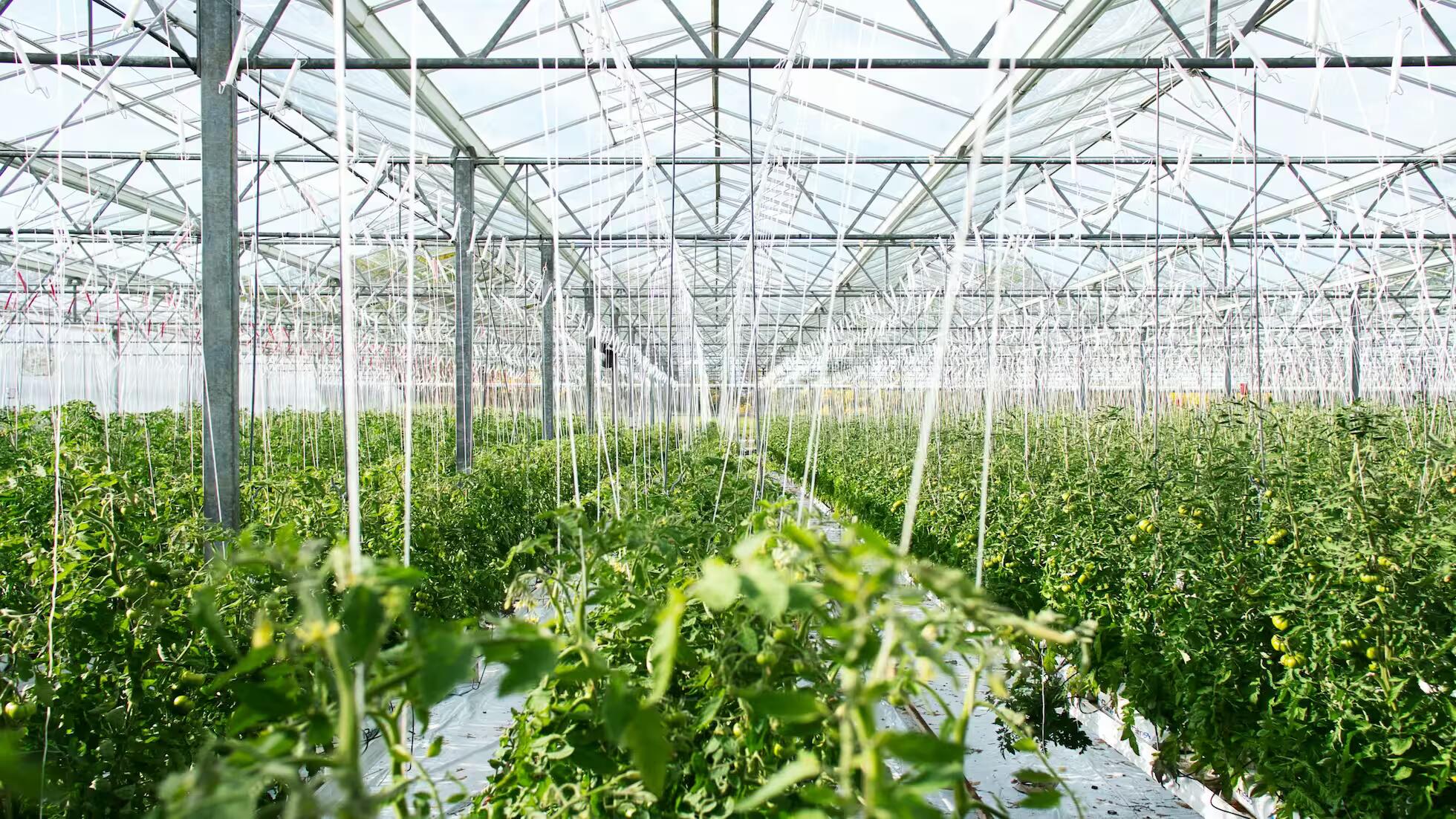Agricultural Production Factors and Service Support

Organic Integration of Smallholders and Modern Agricultural Development
Main Approaches
- Continuously improving the policy support system to provide robust institutional guarantees for the development of smallholder farmers
- Accelerating the cultivation of new types of agricultural management entities to innovate and drive smallholder development
- Accelerating the development of socialized agricultural services, focusing on solving the problems smallholders face in inefficient, unprofitable, or unfeasible tasks
- Accelerating the application of technological equipment and infrastructure construction to improve smallholder production conditions
- Promoting the formation of industrial development and enhancing smallholders’ capacity to participate in modern agricultural construction
Achievements
- A modern agricultural management system that drives smallholder development has begun to take shape
- The path for smallholders to integrate into modern agricultural development has become increasingly clear
- Channels to increase smallholder income have become more diversified
- The support and protection system for smallholder development has been basically established
Challenges and Difficulties
- Smallholders lack intrinsic motivation to connect with modern agriculture and need to improve their self-development capacity
- The development of new types of management entities is unbalanced and insufficient, and their ability to drive smallholder development needs to be enhanced
- Agricultural socialized services for smallholders are just emerging, and the system needs to be improved
- The construction of mechanisms to help smallholders enter the modern agricultural circulation system is still being explored, and bottlenecks need to be addressed
- The internal and external environment of agricultural development is constantly changing, and the policy system to support smallholders needs to be improved
Advancement Strategies
- Accelerate the development of socialized agricultural services
- Focus on family farms and farmers’ cooperatives
- Strengthen policy support and guarantees
- Strengthen the support of basic conditions
- Strengthen institutional and mechanism guarantees
New Types of Agricultural Management Entities
Main Types
Family Farms
Farmers’ Specialized Cooperatives
- Significant growth in number and scale
- Continuous expansion of industrial fields
- Gradual enhancement of brand management
- Continuous improvement of support policies
Agricultural Socialized Service Organizations
Development Directions
- Improve the operational efficiency of farmers’ specialized cooperatives
- Provide precise socialized services based on farmers’ needs
- Cultivate specialized agricultural service household associations
- Increase efforts to cultivate agricultural enterprises
Leading Enterprises in Agricultural Industrialization
- Clear direction for high-quality development of leading enterprises
- Enhance the digital development capabilities of leading enterprises
- Enhance the green development capabilities of leading enterprises
- Enhance the brand development capabilities of leading enterprises
- Enhance the financing capabilities of leading enterprises
- Explore models to improve the level of collaboration between leading enterprises and farmers
- Build agricultural industrial alliances with close farmer participation
- Explore shareholding models that allow farmers to share in the benefits of production factors
- Promote widely beneficial agricultural socialized service mechanisms for farmers
- Expand diversified entrepreneurial and employment channels for farmers
- Accurately position and build a development echelon for leading enterprises
- Strengthen a group of leading enterprises with international influence
- Improve a group of leading enterprises that lead industry development as “chain masters”
- Strengthen a group of technology-leading leading enterprises with independent innovation capabilities
- Expand a group of regionally integrated leading enterprises with close ties to farmers
- Strengthen support and optimize the development environment for leading enterprises
- Increase policy support
- Innovate financial services
- Strengthen talent training
- Improve guidance services
- Strengthen typical publicity and promotion
Rural Land Contracting
Connotation and Characteristics of Rural Land Contracting Management Rights
The Civil Code clarifies the management rights of rural land contracting as a type of property right. The management right of land contracting is established when the land contracting contract comes into effect. Compared with other property rights, the management rights of land contracting have the following characteristics:
- The subject of the management right of land contracting is clear, namely, the land, forests, water areas, etc., used for agricultural production and management projects that are owned by the state or collectively and cannot enjoy other property sources.
- The management right of rural land contracting only includes the rights of contracting, management, and use of rural land, without the right to dispose of the land. Land ownership remains with the state or collective, and this does not change with the transfer of the land contracting management right.
- The management right of land contracting has different term requirements. For different agricultural production methods, the term of the management right of rural land contracting also varies. The contract period for cultivated land is thirty years, for grassland it is thirty to fifty years, and for forest land it is thirty to seventy years.
Transfer and Methods of Rural Land Contracting Management Rights
- Land leasing (subcontracting)
- Land exchange
- Land transfer
- Land shares
- Land mortgage
- Land inheritance: If the contractor of rural land such as forest land, wasteland, barren hills, barren ditches, barren mounds, and barren beaches dies during the contract period, the contractor’s heirs can legally inherit the benefits from the contracted rural land.
Meaning and Types of Rural Land Contracting Management Disputes
- Agricultural contract disputes
- Rural land contracting contract disputes
- Land contracting management right disputes
Countermeasures and Suggestions for Resolving Rural Land Contracting Management Disputes
- De-administration and strengthen industry supervision
- Remove arbitration statute of limitations
- Build a connection mechanism between arbitration and litigation
- Establish a correction mechanism for arbitration cases
Financial Support Policies for Agriculture
Rural Finance Theory and Policy
The Importance of Financial Support for Agricultural and Rural Development
- Financial support for agriculture is an important tool and means to implement the rural revitalization strategy
- Financial support for agriculture is a practical need to address various issues and contradictions in the new era
- Financial support for agriculture is a necessary means to build a socialist modern country
Main Objectives of Rural Financial Policy
- Drive poverty reduction in rural areas
- Promote coordinated urban-rural regional development
Key Areas of Rural Financial Policy During the 13th Five-Year Plan Period
- Ensure the effective supply of important agricultural products such as grain and pork
- Fully support the fight to win the battle against poverty
- Support the deepening of agricultural supply-side structural reform
- Accelerate the filling of gaps in public services in agriculture and rural areas
- Promote the establishment and improvement of a modern rural social governance system
Key Agricultural Support and Protection Policies and Practices in China at This Stage
Grain Production Support
- One-time subsidies for actual grain farmers
- Subsidies for the purchase and application of agricultural machinery
- Green, high-quality, and efficient action for key crops
- Agricultural production socialized services
- Reform and construction of the grassroots agricultural technology promotion system
- Corn and soybean production subsidies, grain subsidies, and awards for major grain-producing counties
Cultivated Land Protection and Quality Improvement
- Subsidies for cultivated land fertility protection
- Construction of high-standard farmland
- Protection of black soil in Northeast China
- Protection and improvement of cultivated land quality
- Crop rotation and fallow
- Deep loosening of cultivated land
Seed Industry Innovation and Development
- Protection of germplasm resources
- Promotion of improved breeds of livestock
- Rewards for major seed production counties
Healthy Development of Animal Husbandry
- Dairy industry revitalization action
- Grain for feed conversion
- Incremental quality improvement action for beef and mutton
- Rewards for major pig (cattle, sheep) production counties
Enhancement of the Entire Agricultural Industry Chain
- Integration of agricultural industry development
- Construction of cold storage and preservation facilities at agricultural product origins
- Agricultural product geographical indication protection projects
Cultivation of New Types of Management Entities
- Cultivation of high-quality farmers
- High-quality development of new agricultural management entities
- Agricultural credit guarantee services
Agricultural Resource Protection and Utilization
- Subsidies and rewards for grassland ecological protection
- Fisheries development subsidies
- Green farming cycle agriculture pilot projects
- Comprehensive utilization of crop straw
- Scientific use and recycling of agricultural film
Agricultural Disaster Prevention and Relief
- Agricultural production disaster relief
- Animal disease prevention and control
- Agricultural insurance premium subsidies
Agricultural Living Environment Improvement
- Rural toilet renovation
Development and Practice of Rural Finance and Agricultural Insurance
Role of Rural Finance
- Adjust funds and promote economic development in rural areas
- Improve agricultural productivity and promote rural technological progress
- Provide convenient services to support the modernization of agriculture and increase farmers’ income
- Stabilize the rural economy, manage rural funds, and protect farmers’ rights
Structure of the Rural Financial System
Role of Agricultural Insurance
- For farmers, agricultural insurance helps reduce micro-level agricultural risks by transferring risk, ensuring agricultural safety. The combination of agricultural insurance and credit products also helps improve farmers’ credit and economic status in rural areas, increasing their income.
- For the rural economy, it helps promote agricultural industry structure adjustment, provides international competitiveness for agricultural products, promotes agricultural industrialization, and enhances the stability of the rural economy.
- For the national economy, agricultural insurance helps promote the redistribution of national income.
Published at: May 13, 2024 · Modified at: Dec 21, 2025


